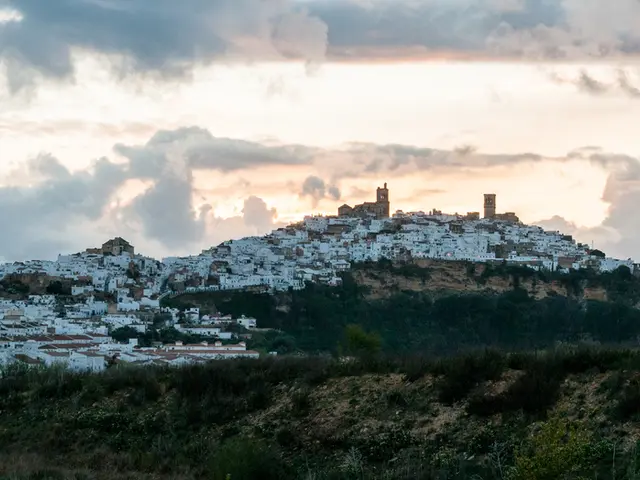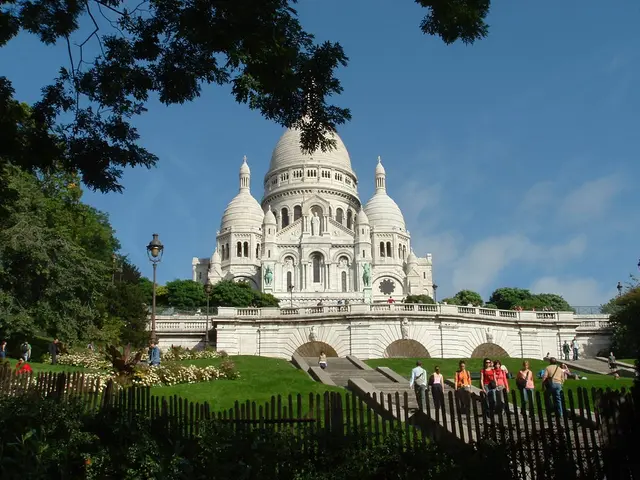A Compilation of the Most Distinctive Painted Vaults Throughout History
Published: June 11, 2024
Painted ceilings have long been a testament to human creativity and artistic mastery, embodying cultural and historical contexts of their respective eras. This compilation showcases some of the world's most iconic painted ceilings, celebrating the artistic brilliance that brought these masterpieces to life.
Michelangelo's Sistine Chapel Ceiling
Situated within the heart of the Vatican City, Michelangelo's Sistine Chapel ceiling, completed in 1512, remains one of the most impressive artistic achievements of the Renaissance. The frescoes, spanning over 500 square meters, depict nine scenes from the Book of Genesis, with the "Creation of Adam" being the most celebrated. The intricate details and vibrant colors demonstrate Michelangelo's mastery of the human anatomy and technique. Each panel narrates a biblical story, seamed together to form a grand theological and visual narrative. The grandeur and complexity make it a influential piece in art history, attracting millions of visitors yearly.
The Hall of Mirrors at the Palace of Versailles
Designed by Charles Le Brun in 1684, the Hall of Mirrors in the Palace of Versailles embodies the opulence of the French Baroque period. The ceiling paintings glorify King Louis XIV's political achievements, depicting scenes of his military victories and triumphs. The elaborate compositions and vivid colors heighten the grandeur of the hall, echoing the Sun King's absolute power. The Hall of Mirrors served as a passageway and a venue for ceremonies, exemplifying the extravagance and artistic prowess of 17th-century France.
"The Triumph of the Name of Jesus"
This Baroque masterpiece created by Giovanni Battista Gaulli in 1679 is housed within the Church of the Gesu in Rome. The fresco creates an illusion of the ceiling opening to the heavens, with angels and saints swirling around the radiant monogram of Jesus. The dynamic composition and skillful use of light and shadow create a sense of divine glory and spiritual transcendence. Gaulli's work epitomizes the theatrical and emotional intensity characteristic of Baroque art.
Join our newsletter for creative inspiration and community support.
The Painted Caves of Ajanta
Found in Maharashtra, India, the Ajanta Caves were created between the 2nd century BCE and about 480 CE. These caves are renowned for their magnificent murals and ceiling paintings, which illustrate the life of Buddha and various Jataka tales. The vivid colors and intricate details demonstrate the artistic excellence of ancient Indian craftsmen, offering invaluable insights into early Buddhist art and narrative traditions.
The Dragon and Clouds Ceiling at Kennin-ji Temple
Located in Kyoto, Japan, the ceiling of Kennin-ji Temple features a dramatic painting of twin dragons amidst swirling clouds, completed in 2002 by contemporary artist Koizumi Junsaku. Despite being a modern project, the artwork adheres to traditional Japanese techniques and symbolism, uniting ancient and modern aesthetics. The dragons, representing guardians of Buddhist law, evoke a powerful mystical presence, seamlessly intertwined with the dynamic clouds.
Thousand-Year-Old Ceilings of the Brihadeeswarar Temple
The ceilings of the Brihadeeswarar Temple provide an glimpse into the architectural prowess of the Chola dynasty, with intricate frescoes depicting Hindu deities, celestial beings, and mythological scenes. These paintings showcase the artistic brilliance of the Chola era, characterized by elaborate detailing and vibrant colors. Each fresco illustrates various mythological episodes, reflecting the religious devotion and cultural sophistication of the period.
Ceilings of Wat Phra Kaew
Wat Phra Kaew, the Temple of the Emerald Buddha in Bangkok, displays ceilings adorned with intricate patterns, mythological scenes, and images of celestial beings. These decorations reflect traditional Thai art and religious symbolism, maintaining the sacred and spiritual ambiance of the temple. The rich tapestry of colors and detailed designs depict Buddhist cosmology and the Thai pantheon of deities.
The Dome of Shah Mosque
The dome of the Shah Mosque, completed in 1629, is renowned for its stunning blue and turquoise tile work forming intricate geometric patterns and calligraphy. The designs reflect the sophisticated artistry of the Safavid-era Persia, demonstrating the skill and creativity of the Persian craftsmen. The harmony between the vibrant tiles and compositions create a mesmerizing visual effect, embodying the aesthetic and spiritual values of Islamic art.
The Galleria Colonna Ceiling
The Galleria Colonna, part of Palazzo Colonna in Rome, features a grand Baroque ceiling completed in 1675, adorned with elaborate frescoes by Giovanni Coli and Filippo Gherardi. These frescoes depict battles and Colonna family victories, filled with vivid colors and dynamic compositions. The work highlights the opulence and grandeur of the Baroque era, making the Galleria Colonna a significant example of period art and architecture.
Caisson Ceiling of Beihai Park
Located in Beijing, the caisson ceiling of the Five Dragons Pavilion at Beihai Park showcases intricately painted dragon motifs, symbolizing imperial power and celestial harmony. The vibrant colors and delicate patterns create a dynamic visual effect, characteristic of Chinese imperial design. This decorative technique, known as caisson, has been utilized for centuries due to its ability to enhance architectural beauty.
The Music Room of Ali Qapu Palace
Established in the early 17th century, the Music Room of Ali Qapu Palace features a ceiling adorned with intricate stucco work and painted patterns. The delicate designs, vibrant colors, and harmonious compositions combine to create a visually stunning effect. This work exemplifies the sophisticated artistry and luxurious decorative style of the Safavid period, making Ali Qapu Palace a key example of Persian architectural and artistic excellence.
"The Allegory of Divine Providence and Barberini Power"
Created by Pietro da Cortona in 1639, the ceiling painting at Palazzo Barberini glorifies the Barberini family, featuring allegorical figures and rich symbolism. The central figure of Divine Providence is surrounded by personifications of virtues and celestial beings, rendered with a dynamic composition and dramatic lighting. The fresco highlights the family's influence and power, showcasing the grandeur and theatricality of Baroque art.
"The Assumption of the Virgin" by Correggio
Completed in 1530 and housed within Parma Cathedral, Correggio's "The Assumption of the Virgin" creates an illusion of heavenly ascent, featuring the Virgin Mary being assumed into heaven. Correggio's skillful use of perspective and light create an illusion of depth and movement, drawing the viewer's gaze upward into the celestial realm. The painting's emotional intensity and technical brilliance make it a pivotal work of the Renaissance.
"The Apotheosis of Washington" by Constantino Brumidi
"The Apotheosis of Washington," completed in 1865, adorns the dome of the United States Capitol Rotunda. This Neoclassical fresco depicts George Washington ascending to heaven, becoming a god-like figure surrounded by classical deities and allegorical figures representing national values such as liberty and victory. The fresco symbolizes the deification of Washington, reinforcing his status as a founding father and national hero. The work serves as a significant symbol in American historical and political iconography.
In conclusion, these iconic painted ceilings demonstrate the enduring legacy of human creativity and artistic achievement. Despite the challenging conditions in which they were created, these masterpieces continue to inspire and captivate audiences with their grandeur and cultural significance. They are living testaments to the potential of human ingenuity and passion for artistic excellence.
Share
- Subscribe to our newsletter for the latest updates on influential pieces in art history, such as news about the upcoming fashion-and-beauty and lifestyle features on the Sistine Chapel Ceiling and the Hall of Mirrors at the Palace of Versailles.
- Don't miss out on our food-and-drink section highlighting the vibrant colors and intricate details of the painted ceilings of the Thousand-Year-Old Ceilings of the Brihadeeswarar Temple, showcasing the culinary journey through Indian and South Asian art.
- Discover our home-and-garden and travel segments featuring photos and information about the painted caves of Ajanta, the Caisson Ceiling of Beihai Park, and the Dome of Shah Mosque – must-see destinations for art enthusiasts and world travelers alike.




